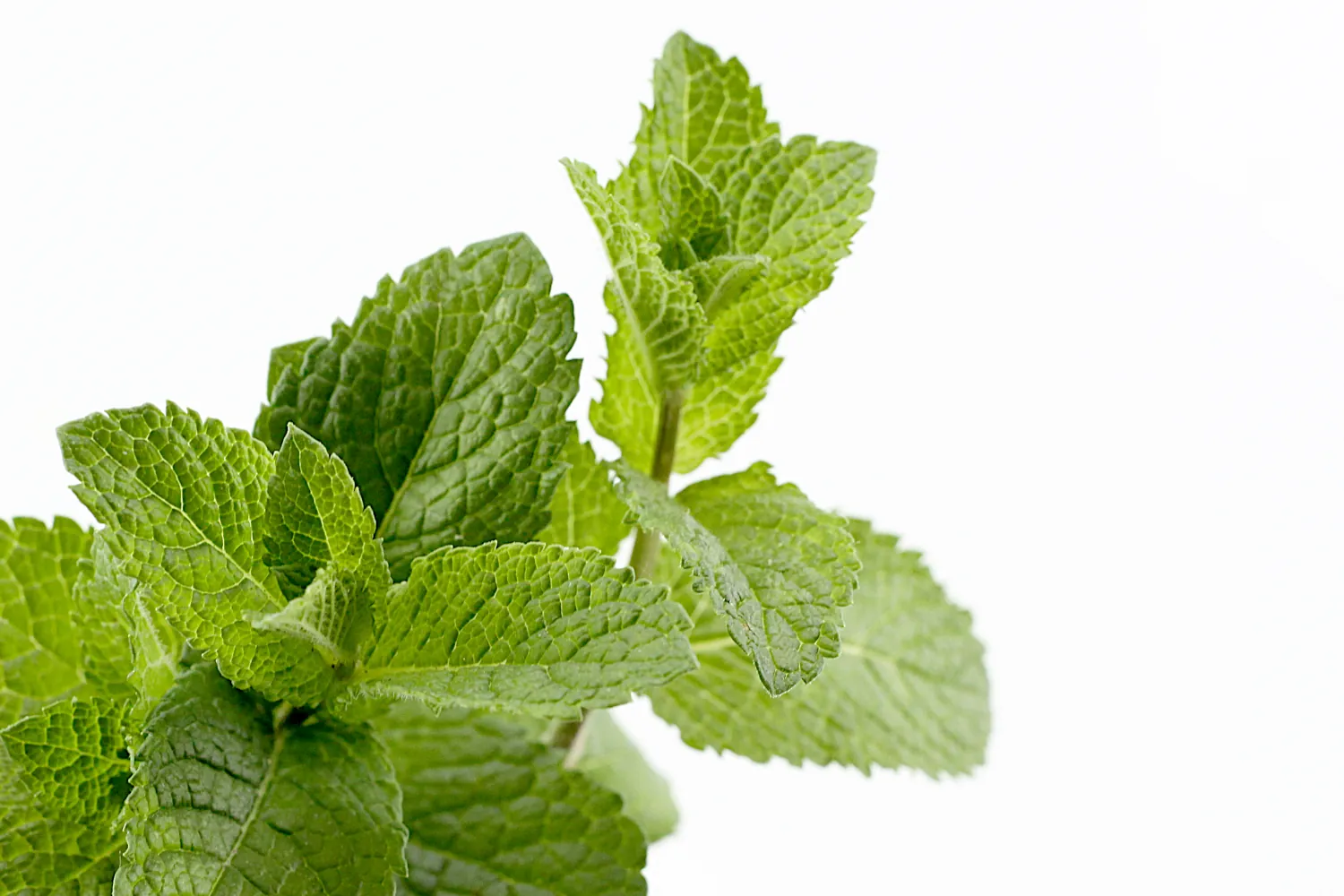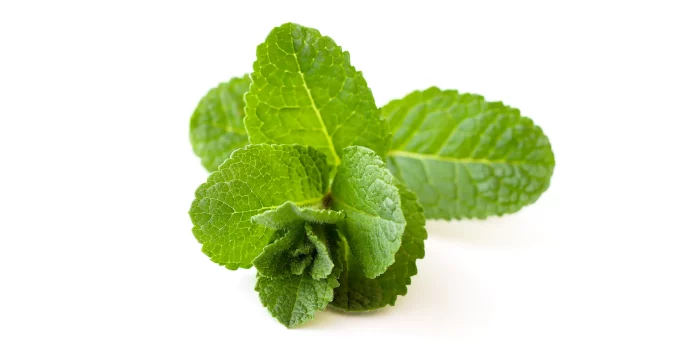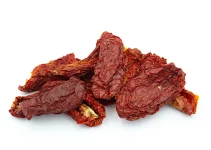When it comes to choosing the perfect substitute from the many mint substitutes, it really comes down to what you’re trying to make, whether it’s drinks, savory dishes or desserts.
For example, when I think of mint, I immediately think of mojitos. It’s just that it’s my favorite alcoholic drink, especially during the summer.
If we were to take this example, could you imagine using mint substitutes that are represented by other fresh herbs? Can you imagine using substitutes like basil, cilantro, rosemary or even jalapenos? I think it’s fabulous if you’re willing to experiment like that.
I personally couldn’t but others are not like me. I’m a stickler for ingredients when it comes to one of my guilty pleasures. The most I would see myself doing would be to use a mint-flavored liqueur or a mint syrup in the mojito but that can be more expensive than buying a live mint plant from the supermarket.
Table of Contents
12 Delicious Mint Substitutes

What I was trying to say with my convoluted introduction is that there are plenty of mint substitutes but you have to decide which would be more suitable for what you’re cooking, be it salads, savory dishes, desserts or drinks.
Mint is a herb with a vast array of uses, beloved universally across many cultures. Since there are so many uses for it, you’ll be the one to pick your favorite substitutes from this long list.
Some of the fresh herbs that work as substitutes actually belong to the mint family (Lamiaceae family). These include basil, oregano, marjoram, and rosemary.
Other herbs belong to the Apiaceae family, which is also known as the celery, carrot or parsley family. These include parsley and cilantro.
Tarragon is a herb in the sunflower family.
1. Dried mint (powerful flavor, one of the best mint substitutes)
When we can’t find fresh herbs, we tend to think of their dried counterparts. It’s also a cheaper alternative and more readily available in many parts of the world.
The substitution is simple: 1 teaspoon dried mint for 1 tablespoon chopped leaves.
1 tablespoon is the equivalent of 3 teaspoons, which means that dried mint leaves are considered to be 3 times more potent than fresh leaves.
Frankly, I didn’t know that since I prefer growing my herbs indoors. Well, I only grab a few leaves from my plants when I can’t find them at the supermarket because one pot for each herb is not enough for all the cooking that I do. All my pots would be leafless in less than a month.
2. Peppermint extract (one of the best mint substitutes for desserts & drinks)
This one is actually extracted from peppermint and not from mint (spearmint).
Peppermint is a variety, an incredibly popular one because it has the highest concentration of menthol, which also means that it’s really powerful.
If you want to make a really delicious mint chocolate chip ice cream, you’ll have to use peppermint extract to obtain a deep, refreshing flavor.
You could even add a couple of drops to a mojito if you don’t have fresh leaves.
You can use the following measurements: 4 drops of extract for 1 tablespoon chopped mint leaves.
Or you can use 1 drop of peppermint oil for 1 tablespoon chopped mint leaves.
As you can see, the extract is not as powerful as peppermint oil.
The disadvantage is that these 2 (extract & oil) are mainly used for desserts.
If you’re making savory dishes you’ll either have to use dried mint or other fresh herbs (basil, parsley, cilantro, etc.) as mint substitutes.
3. Basil (fresh flavors)
When it comes to fresh herbs that can be used as substitutes for mint, basil should be your first choice.
I wouldn’t say that they have similar flavors. You definitely can’t confuse one with the other. As all herbs, they’re quite distinct in their flavors.
Basil has a sweet, peppery, savory flavor. For others the taste is reminiscent of anise (aniseed) with its savory clove fragrance.
Mint is tangy but sweet and it leaves a cold aftertaste.
What these 2 have in common is that they’re both refreshing. But that also goes for parsley, cilantro, dill, and many others.
Basil can serve as the perfect replacement, especially when it comes to all kinds of savory dishes: salads, meats, pasta.
It can even be used for making smoothies and mojitos.
You can make a 1:1 substitution, no need to adjust the quantities. In fact, add more if you really love your herbs in any dish.
4. Rosemary (great for meats)
When it comes to mint substitutes that work well with all sorts of meats, my mind immediately goes to rosemary.
I absolutely love it with meat and fish and I always use it for oven roasted vegetables, especially with potatoes.
Rosemary is such a fragrant herb, it has a complex taste that combines citrus, lavender, pine, sage, mint, sage, and pepper.
As you can see, it’s a herb that can be used as a substitute for all sorts of ingredients.
It’s unforgettable. It’s a strong herb, which makes it suitable for meats of all kinds.
If you’ve never cooked with rosemary, I recommend using at least 3 fresh sprigs per dish. If you’re making a pan of oven roasted vegetables, 3 sprigs are enough.
You can also buy dried rosemary because it’s really flavorful.
3 fresh sprigs are the equivalent of one teaspoon dried.
5. Parsley
I love parsley. The intense, grassy flavor in the most delicious way is what really makes me love it.
To me, it has a sweet, earthy and a bit spicy taste. For others, it tastes a bit bitter.
You can use parsley as a garnish but you can also use it in smoothies and all sorts of salads.
Parsley and mint can go together in many recipes, one popular example is tabbouleh. The original recipe for tabbouleh includes bulgur wheat, chopped vegetables, parsley, mint, and a zesty dressing.
If you don’t have any mint, just use more parsley. I would add one and a half more parsley to substitute the missing herb.
6. Cilantro
If you think that cilantro tastes like soap, this is not the substitute for you at all.
However, if you love it, you’ll actually think that it works beautifully as a replacement for mint.
You can make a 1:1 substitution.
7. Tarragon
Tarragon has a licorice-like taste, quite similar to fennel and anise. I’m not the biggest fan of tarragon but it can be quite wonderful in the right combinations.
It’s not my first recommendation for mint substitutes because it’s definitely not as easy to find as basil, rosemary, parsley, oregano or cilantro.
It pairs well with salmon, chicken, veal, rabbit, eggs, and vegetables like carrots, asparagus, artichokes, and fava beans.
If your recipe calls for mint and it includes the mint substitutes that I’ve talked of above, you can experiment with using tarragon as a substitute.
Use half quantity of chopped tarragon to substitute the mint quantity required by the recipe.
8. Oregano
Oregano is actually more close in flavor to thyme but it can work as a substitute for mint in salads or paired with fish.
It also works well in marinades for beef, lamb, and chicken.
9. Mint tea bags (mint substitute in drinks)
You can actually use mint tea bags to flavor drinks, including alcoholic drinks.
Make the tea using a single bag but use less water because it’s ideal to obtain a more concentrated aroma.
Then, add the liquid to whatever drink you want to make.
10. Mint liqueur
This is mainly used when making alcoholic beverages that use fresh leaves.
Unlike the fresh leaves, mint liqueur actually has a certain alcohol content so you should also take that into account when making the substitution.
The good thing is that you can taste the end result and make it as minty as you’d like.
11. Mint bitters
Mint bitters is another great substitute for drinks. It’s the alcoholic kind, with 35.75% alcohol by volume. It’s pretty strong but you won’t have to add too much to your cocktails.
Basically, taste as you’re making them to see how much you should add. You won’t have to add too much to obtain that fresh taste of mint in your drinks.
By the end of all that tasting, you’ll be quite happy.
12. Crème de menthe (syrup)
If you want a non-alcoholic, natural flavoring for your drinks, you should buy mint syrup. It’s also called crème de menthe.
The nice thing about these syrups nowadays is that they’re made with natural flavors and cane sugar.
They have a nice, intense mint taste without being overpowering.
If you’re looking for mint substitutes that can be used in all sorts of drinks, teas, sodas, smoothies, coffees, alcoholic beverages, and desserts, then these syrups are a really nice choice and they’re not outrageously expensive.
Popular Fresh Mint Recipes
Let’s check out some really popular recipes that use fresh mint as an ingredient. That way, you’ll see what is expected when you’re trying to use any of those mint substitutes that I’ve mentioned above.
Mojito
Let’s start our talk of the most popular mint recipes where you might have to use mint substitutes.
First of all, if you want fresh leaves in your mojito but you only have basil, I recommend making it with fresh basil leaves. It would be even better if you have lemon basil.
Nevertheless, if you’re the biggest fan of mojitos, I recommend growing the Mojito Mint variety if you can get the seeds.
Another substitute you can use for mojitos is to make a syrup with peppermint extract. Or make the syrup with dried mint leaves and strain it to remove the dried leaves.
For making the syrup, add a teaspoon of peppermint extract to a cup each of water and sugar. Heat on the stove until sugar is completely dissolved. It will add a nice sweetness to cocktails.
If you don’t want to be bothered about making the syrup with peppermint extract or dried leaves, use mint liqueur or mint bitters directly.
Add as much liqueur/mint bitters as you’d like, until you’re satisfied with the end taste.
All these substitutes that we’ve talked about for mojito, work for all the other alcoholic drinks that require fresh mint leaves.
If you’re making the non-alcoholic king, I recommend making that syrup with peppermint extract or dried leaves.
Minty watermelon-cucumber salad
Freshly chopped mint is added to this recipe. I would use basil instead. But parsley would blend nicely, too.
Mint marinades
When you’re making marinades for meats, you can go with a combination of herbs as mint substitutes.
I especially love thyme, rosemary, oregano, cilantro, and even a bit of tarragon for my marinades.
If you only want to use a single herb for mint marinades, I recommend rosemary. It’s the absolute best, even more delicious than mint, as far as I’m concerned.
On second place, I would situate thyme, oregano and cilantro.
Third place belongs to tarragon. It’s a bit strong for me so I don’t use it as much as all the other herbs.
Tabbouleh
I am well aware that mint is a staple for tabbouleh but if you don’t have any, add just parsley and it will be delicious.
Tabbouleh is a dish that you can use many different ingredient combinations, play with whatever ingredients work best for you. Cilantro also works as a mint substitute for tabbouleh.
Chicken gyros
Just like with tabbouleh, parsley and cilantro are two fantastic substitutes if the recipe calls for finely chopped fresh mint leaves. In this case, I’m partial to parsley, it’s just so amazingly delicious in gyros and it’s one of the best mint substitutes for most savory dishes.




